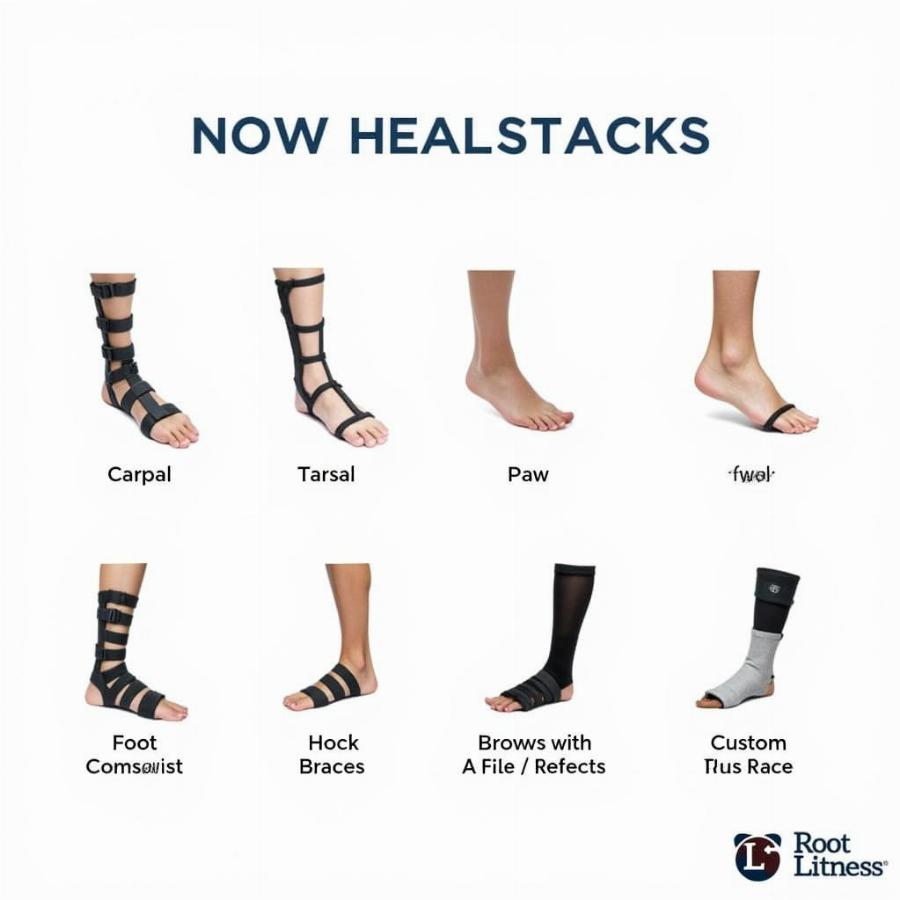A dog foot brace can be a lifesaver for your furry friend if they’re experiencing mobility issues. Whether it’s due to an injury, arthritis, or a neurological condition, a brace can provide support, stability, and pain relief, helping your dog regain some of their lost mobility. This comprehensive guide will explore the world of dog foot braces, covering everything from choosing the right brace to proper care and maintenance. We’ll discuss the various types of braces available, the conditions they can help with, and how to ensure a comfortable and effective fit for your canine companion.
Understanding the Need for a Dog Foot Brace
Why might a dog need a foot brace in the first place? There are a number of reasons, ranging from acute injuries like sprains and fractures to chronic conditions such as arthritis and degenerative joint disease. A brace can also be beneficial for dogs recovering from surgery or those with neurological conditions affecting their leg function. The primary purpose of a dog foot brace is to provide support and stability to the affected limb, reducing pain and inflammation and promoting healing. It can also help prevent further injury by limiting range of motion and protecting the foot from impact.
Types of Dog Foot Braces
There are several types of dog foot braces available, each designed for specific needs and conditions. Some common types include:
- Carpal/Tarsal Braces: These braces support the wrist (carpus) or ankle (tarsus) joint, providing stability and reducing strain.
- Paw/Knuckle Braces: These braces stabilize the toes and paw, protecting injuries and aiding in healing.
- Hock Braces: Designed specifically for the hock joint, these braces offer support and compression for conditions like arthritis.
- Custom-Made Braces: For dogs with unique needs or complex injuries, a custom-made brace can provide the most precise and effective support.
 Different Types of Dog Foot Braces
Different Types of Dog Foot Braces
Choosing the Right Dog Foot Brace
Selecting the appropriate brace for your dog is crucial for its effectiveness. Factors to consider include the size and breed of your dog, the specific condition being addressed, and the level of support required. Consulting with your veterinarian is highly recommended, as they can assess your dog’s individual needs and recommend the most suitable brace. Additionally, consider the materials used in the brace, ensuring they are durable, breathable, and comfortable for your dog to wear.
How to Fit and Use a Dog Foot Brace
Proper fitting and application of the brace are essential for its efficacy and your dog’s comfort. Follow the manufacturer’s instructions carefully and ensure the brace fits snugly but not too tightly. It’s important to monitor your dog for any signs of discomfort or rubbing, and adjust the brace as needed. Initially, introduce the brace gradually, allowing your dog to acclimate to wearing it for short periods.
Caring for Your Dog’s Foot Brace
Regular cleaning and maintenance of the brace are crucial for hygiene and longevity. Most braces can be hand-washed with mild soap and water. Allow the brace to air dry completely before putting it back on your dog. Inspect the brace regularly for any signs of wear and tear, and replace it if necessary.
What if my dog doesn’t like the brace?
Many dogs adapt to wearing a brace quickly, but some may initially resist. Patience and positive reinforcement are key. Start by introducing the brace for short periods and rewarding your dog with treats and praise. Gradually increase the wearing time as your dog becomes more comfortable. If your dog continues to struggle, consult your veterinarian or a professional dog trainer for assistance. They may offer additional tips for desensitization and acclimation. You can also explore options like dog booties for summer for milder paw protection.
Conclusion
A dog foot brace can significantly improve your dog’s quality of life by providing support, stability, and pain relief. Choosing the right brace and ensuring proper fit and care are essential for its effectiveness. By understanding the various types of braces available and following the guidelines outlined in this article, you can help your furry friend regain their mobility and enjoy a more active and comfortable life. For more tips on supporting your dog’s well-being, check out our article on why does my dog sit on my foot. Remember to always consult with your veterinarian for personalized advice and guidance.
FAQs
- How long can a dog wear a foot brace? This depends on the individual dog and the reason for the brace. Your veterinarian can provide specific recommendations.
- Can a dog sleep with a foot brace? In some cases, yes. Your veterinarian will advise based on your dog’s specific needs.
- Are there any alternatives to a dog foot brace? Alternatives may include physical therapy, medication, or other supportive devices. Discuss these options with your vet.
- How much does a dog foot brace cost? The cost varies depending on the type and brand of brace.
- Where can I buy a dog foot brace? Braces are available from veterinary clinics, pet supply stores, and online retailers. You might even find support at resources like the green dog and cat hospital.
- Can a brace cure my dog’s leg problem? A brace is typically a supportive measure, not a cure. It can manage symptoms and improve mobility.
- What should I do if my dog’s brace breaks? Discontinue use immediately and contact the manufacturer or your veterinarian.
Further Reading
You might also be interested in these related articles: dog stairs small dogs, dog sledding vermont.
About Beaut Dogs
Beaut Dogs is your trusted source for all things canine, offering comprehensive and reliable information about the world of dogs. From breed characteristics and care guides to expert advice on health, nutrition, and training, we’re here to support you and your furry companion every step of the way. For personalized assistance and answers to your specific questions, please contact us via Email at [email protected]. We’re always happy to help! Visit us today at https://beautdogs.com!